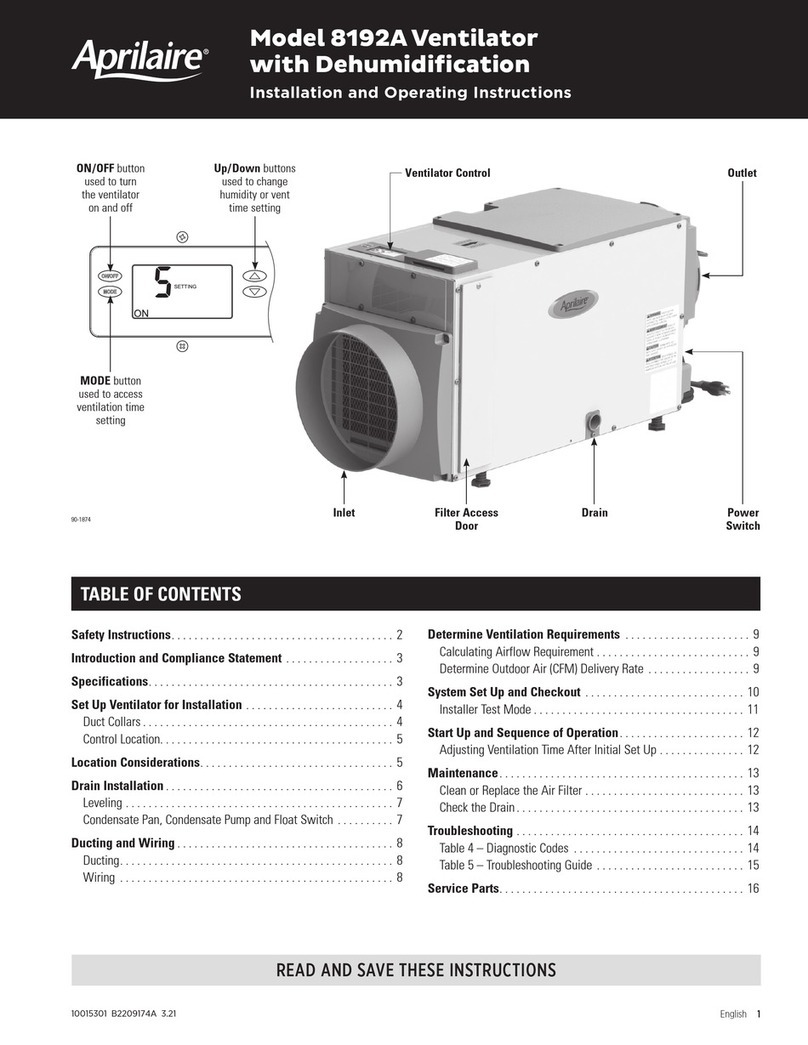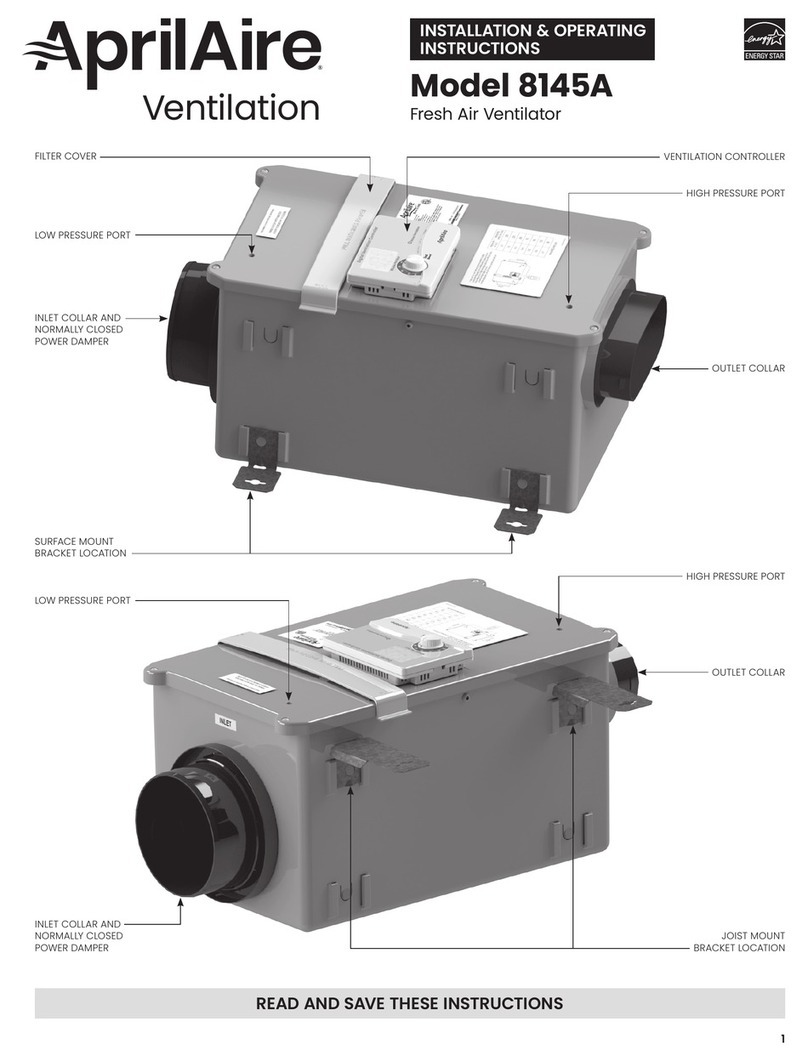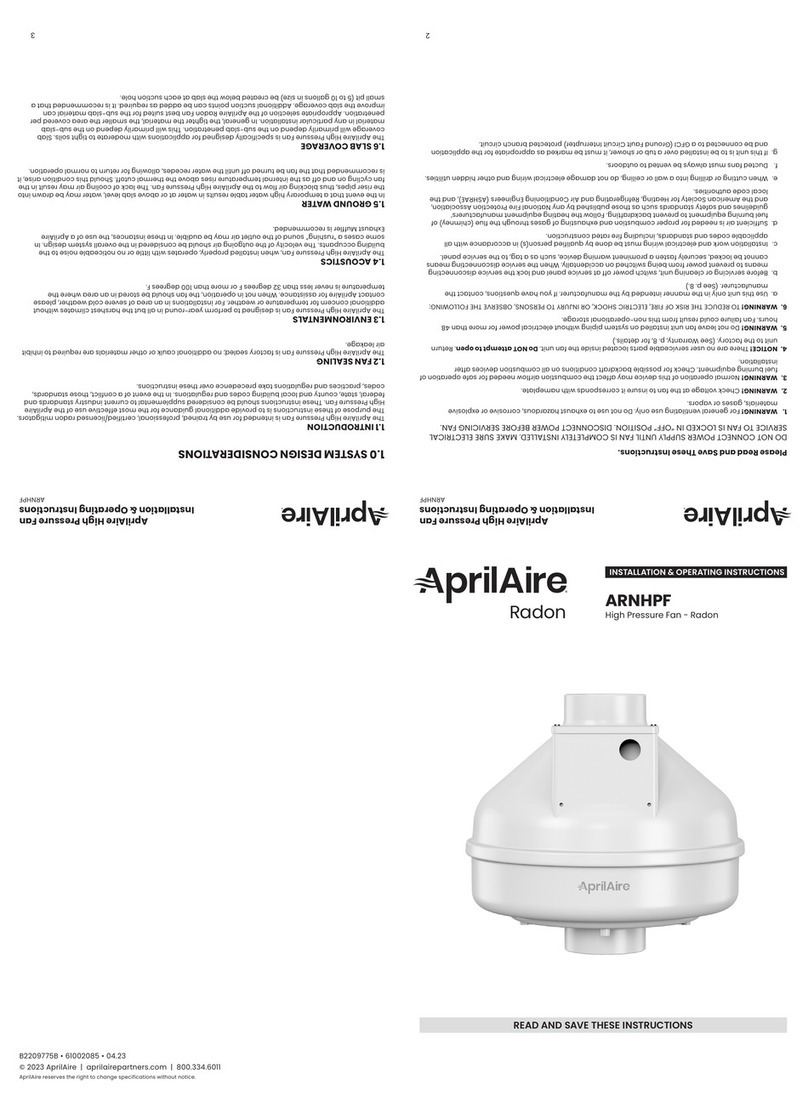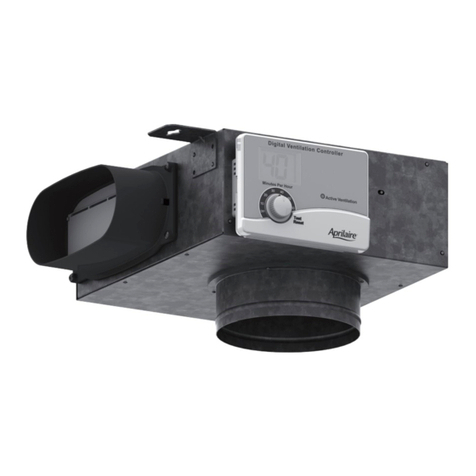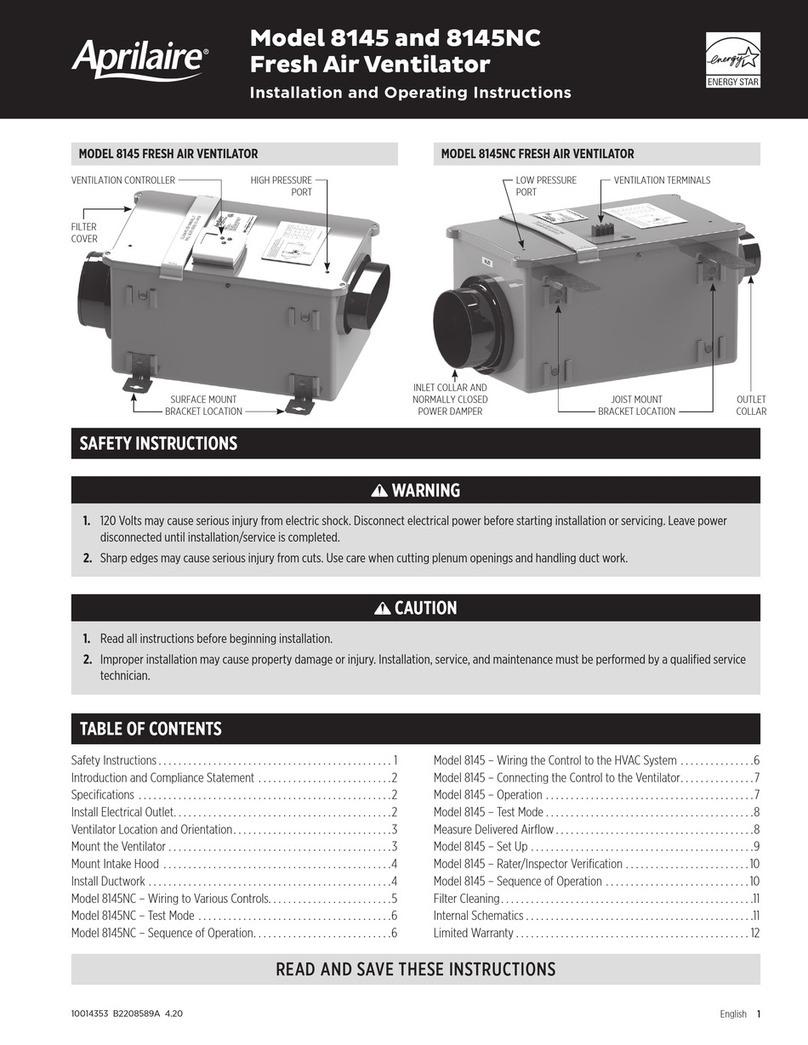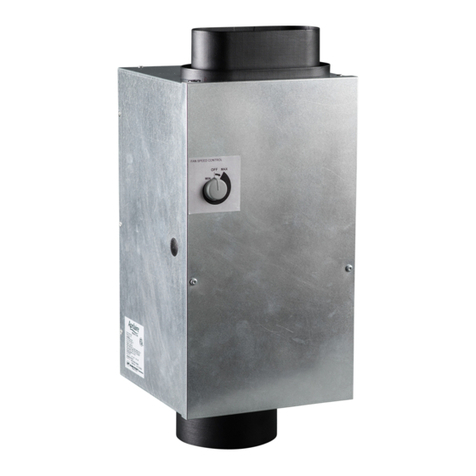-6-
APRILAIRE®LIMITED WARRANTY
Your Research Products Corporation Energy
Recovery Ventilator is expressly warranted for three (3)
years from date of installation to be free from defects in
material or workmanship.
The Energymax®Transfer Core is expressly warrant-
ed for five (5) years from date of installation to be free
from defects in material or workmanship.
Research Products Corporation’s exclusive obligation
under this warranty shall be to supply, without charge, a
replacement for any part of the Energy Recovery
Ventilator which is found to be defective within the
applicable time period and which is returned not later
than thirty (30) days after the end of the time period by
you to either your original supplier or to Research
Products Corporation, Madison, Wisconsin 53701-1467,
along with the model number, date code and date of
installation.
This warranty shall not obligate Research
Products Corporation for any labor costs and shall
not apply to defects in workmanship or materials
furnished by your installer as contrasted to defects
in the Energy Recovery Ventilator itself.
Implied warranties of merchantability or fitness
for a particular purpose shall be limited in duration
to the applicable three (3) or five (5) year period.
Research Products Corporation’s liability for inci-
dental or consequential damages resulting from any
breach of the aforesaid implied warranties or the
above limited warranties is expressly excluded. This
limited warranty is void if this unit is not installed by
a qualified heating and air conditioning contractor. If
the limited warranty is void due to failure to use a
qualified contractor, all disclaimers of implied war-
ranties shall be effective upon installation.
Some states do not allow limitations on how long an
implied warranty lasts or the exclusion or limitation of
incidental or consequential damages so the above
exclusion or limitations may not apply to you.
This warranty gives you specific legal rights and you
may also have other rights which vary from state to
state.


